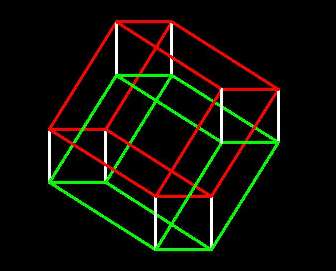|
My December 2017 newsletter described astronomy’s first multi-messenger event: the merger of two neutron stars that produced both gravitational waves (dubbed GW170817) and electromagnetic waves (dubbed GRB170817A). LIGO detected the gravitational waves, and numerous optical telescopes detected the electromagnetic waves. Within 24 hours, this event spawned over 100 scientific papers coauthored by nearly 4000 astronomers representing 900 institutions. Many more papers followed in the ensuing year.
A July 2018 paper by Prado, Fishbach, Holtz, and Spergel compared the observations of gravitational and electromagnetic waves to constrain some speculative theories of gravity that seek to supplant Einstein’s theory of general relativity.
Before getting to that paper, here is some background. For much of the last 100 years, some physicists have spent a great deal of time and effort wondering why gravity is so much weaker than the other three forces of nature.
Elephants, bridge designers, and those who have taken bad falls might not think gravity is weak, but particle physicists do. In some circumstances, two particles might exert all four forces on one another, and we can compare the forces’ intrinsic strengths. Roughly, their strong nuclear force is 100 times greater than their electric force, which in turn is 100 times greater than their weak nuclear force, which is in turn a billion, trillion, trillion times greater than their gravitational force.
If gravity is intrinsically so weak, why is it so important? The answer is scope and relentless accumulation. The strong and weak nuclear forces have extremely short ranges — smaller than a typical nucleus — so these forces only act on neighboring particles. The electric force is attractive between opposite polarity electric charges, and repulsive between same polarity charges, so it nullifies itself between large bodies that typically have equal numbers of positive and negative charges.
Gravity is the only force that is both long-range and always attractive between all known particles. It relentlessly accumulates. Every particle in the Sun attracts every particle in the Earth. The immense numbers of particles exert a total force that is greater than the strong, electric, and weak forces by more than 70 factors of ten. For cosmic bodies, gravity is the only significant force.
While gravity dominates the macro-world, particle physicists are more interested in the micro-world. They persist in trying to explain the billion, trillion, trillion gap between gravity and the other three forces.
I think Einstein had the right answer. He said gravity is not a force — what we call “gravity” is only a naïve description of how objects move through curved spacetime. If humans could perceive the true 4-dimensional geometry of our universe, we would realize that all objects move along the straightest possible paths in a curved space, and no one would even have bothered to invent the word “gravity”. Comparing “gravity” to real forces is like comparing physicists and politicians.

Artist’s conception of four dimensional cube.
Unfortunately, some wrong ideas, like crabgrass, are so deeply rooted that they are almost impossible to eradicate. Billions of people still believe the Earth is flat, and believe the Sun and stars spin around us. (In their defense, that’s exactly what it looks like.)
Generations of theoretical physicists have spent countless hours trying to formulate “gravity” as the fourth force.
Our Standard Model says particles called bosons “carry” forces between fermions, the particles of matter. Gluons carry the strong force; photons (the particles of light) carry electromagnetism; and W’s and Z’s carry the weak force. So far so good — all of that does describe nature very well indeed.
Many theorists try to fit gravity into this scheme by hypothesizing as yet unobserved particles — gravitons that carry “gravity”. This approach fails abysmally.
Others propose gravity only appears to be weak because it expands into additional unseen dimensions, while the other three forces are somehow restricted to the four dimensions of spacetime that we do observe.
Here is how this works. A flash of light spreads out through space in all 3 dimensions. At each instant, the flash illuminates a sphere (the surface of a three dimensional ball) of radius r. The area of the sphere is always proportional to r-squared. As time proceeds, the sphere grows ever larger. The number of photons in the flash is always the same, but the intensity of light (number of photons divided by area) is inversely proportional to r-squared. If gravitons expanded into four dimensions of space (three we see plus one we don’t), the intensity of gravity would be inversely proportional to r-cubed. At great distances, gravity would decrease much faster than the electromagnetic force carried by photons. Adding the one dimension of time, those gravitons would exist in five dimensions of spacetime, while the photons exist in four dimensions.
Now we get to the recent paper comparing gravitational waves and light waves.
From a gravitational wave’s profile, we can calculate the masses of the colliding bodies (two neutron stars in this case) and the intensity of the wave at its source. By comparing the original intensity to the intensity measured by LIGO, we can calculate our distance from the source, assuming spacetime has four dimensions.
We can also calculate our distance from their source from the redshift of light waves. Since these gravitational waves and light waves seem to come from the same place at the same time, the two calculated distances — one by gravity and the other by light — should be equal if both traveled through the same number of dimensions of spacetime.
The calculated distances for GW170817 and GRB170817A are in fact equal within measurement uncertainties. Both are about 144 million light-years (860 million, trillion miles). Assuming light propagates in four dimensions, the authors calculate D, the apparent number of dimensions through which gravity propagates. They find D is between 3.89 and 4.07, with the spread between these values reflecting measurement uncertainties. Since D really should be an integer, this means D = 4, the same as light.
At least in this situation, there is no evidence for additional, unseen dimensions.
Is this the end of theories of hidden dimensions? No way — theorists are far too skilled with mathematical duct tape. For one thing, 144 million light-years is only one-third of 1% of the way to the edge of our observable universe, so perhaps the hidden dimensions arise farther away. This also doesn’t impact string theory, whose hidden dimensions are sub-microscopic.
Lastly, for graviton-true-believers, the authors also find that gravitons, if they exist at all, have a minimum lifetime of 450 million years. (If gravitons decayed more rapidly, GW170817 would have been weaker, and its travel distance would have appeared greater.)
For more about gravitational waves, see my
paperback Einstein’s Theories of Relativity
or my ebook General Relativity 5.

Best Regards,
Robert
January 2019
Note: Previous newsletters can be found on my website.
|